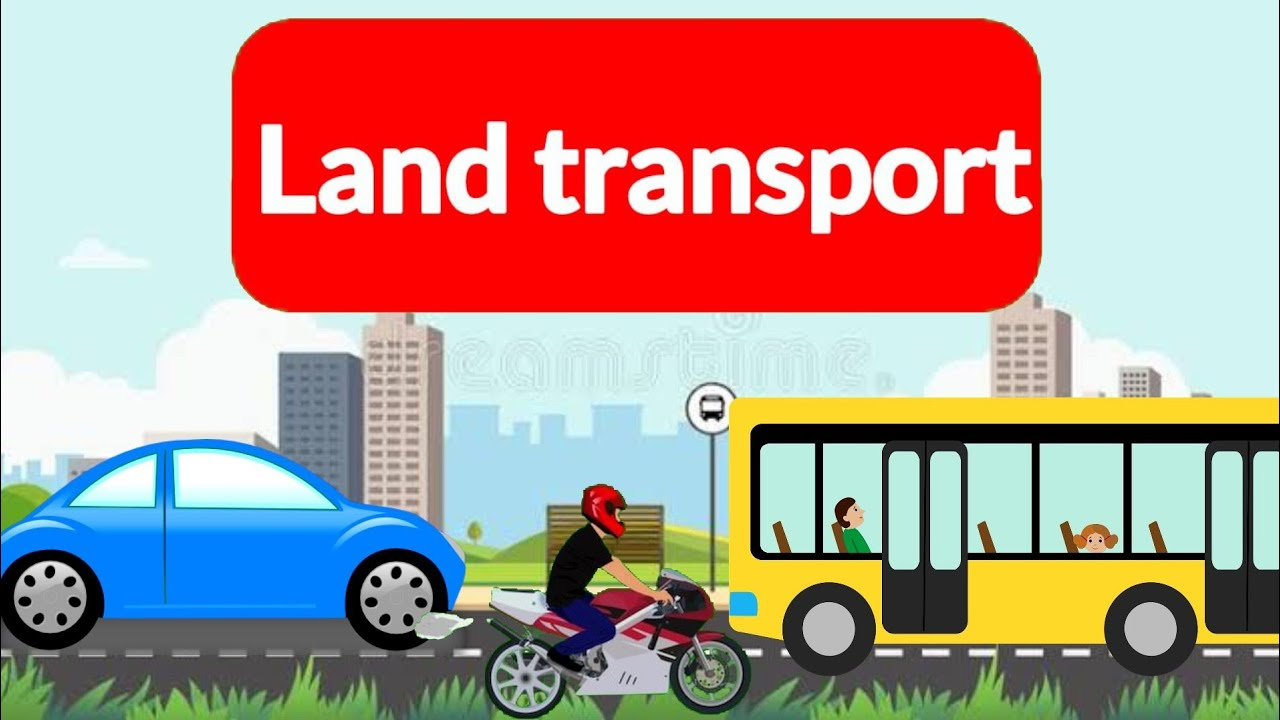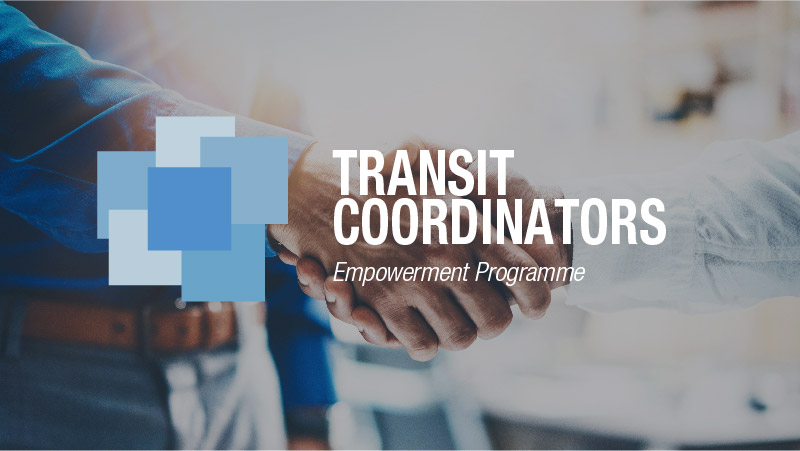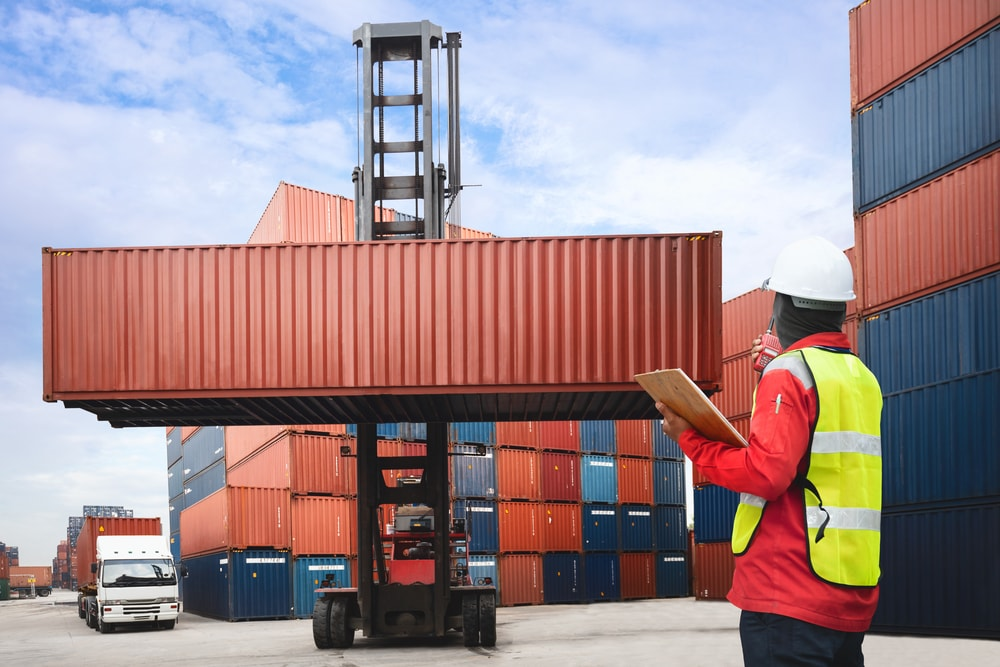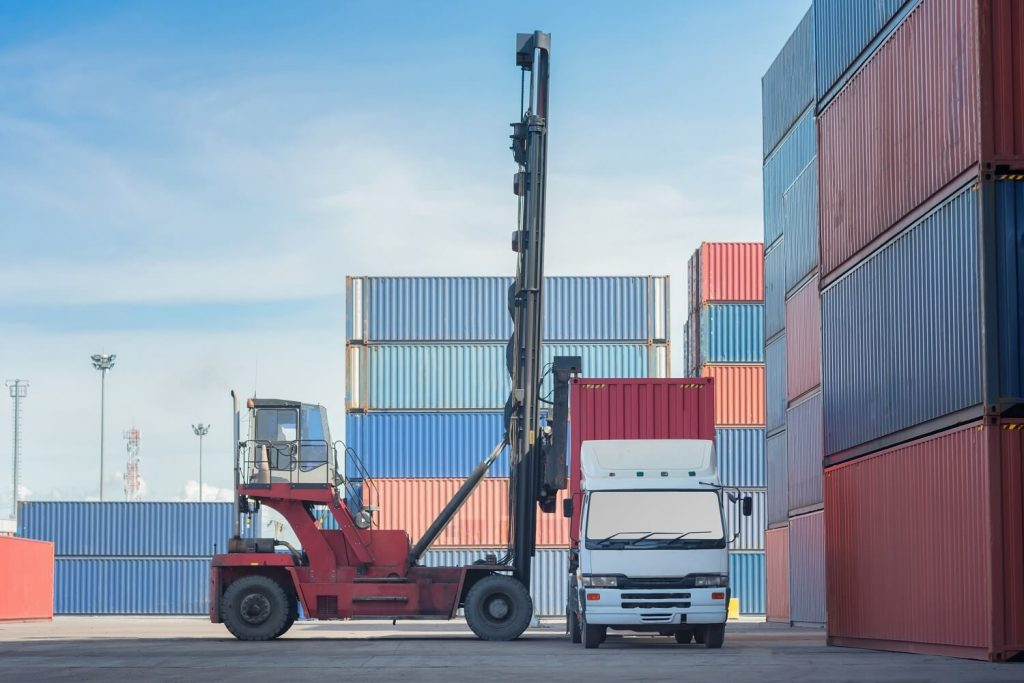Land Transportation – Executive (1 years diploma)
Land Transportation – Executive click here
Brief Job Description: The individual will collect order information, conduct
analysis of past trends; follow-up with trucking companies, coordinate with
client; consolidate orders according to destination and monitor all consignments
in real time
Qualifications Pack Land Transportation Executive
Electives
Elective 1: Consolidation and Tracking
The unit is about performing transport consolidation and tracking of
consignments enroute

Elective 2: Feasibility Assessment
The unit is about conducting feasibility assessment and route planning and
optimization for transport networks
Options
Option 1: Export-Import (EXIM) Documentation
Subsector –EXIM/ Freight Forwarding (FF)/ (Customs Clearance CC)
The unit is about undertaking Export and import processing and documentation
and arranging related clearances
Option 2: Telematics
The unit is about using Telematics for tracking of consignment and shipments as
well as coordinating between drivers and different stakeholders for smoother
operations
Personal Attributes: The individual must be able to prioritize and execute tasks
within scheduled time limits, good eyesight, work for long hours in sitting and
standing position, communication skills, logical thinking and attention to detail.
The individual should have good interpersonal skills and ability to work with
various stakeholders.
Description
Core Skills/Generic
Skills
Core Skills or Generic Skills are a group of skills that are key to learning and
working in today’s world. These skills are typically needed in any work
environment. In the context of the NOS, these include communication related
skills that are applicable to most job roles.
Function
Function is an activity necessary for achieving the key purpose of the sector,
occupation, or area of work, which can be carried out by a person or a group
of persons. Functions are identified through functional analysis and form the
basis of NOS.
Job role Job role defines a unique set of functions that together form a unique
employment opportunity in an organization.
Knowledge and Understanding
Knowledge ing are statements which together specify the technical, generic,
professional and organizational specific knowledge that an individual needs in
order to perform to the required standard.
National Occupational
Standards (NOS) NOS are Occupational Standards which apply uniquely in the Indian context
Occupation Occupation is a set of job roles, which perform similar/related set of functions
in an industry.
Organisational Context
Organisational Context includes the way the organization is structured and
how it operates, including the extent of operative knowledge managers have
of their relevant areas of responsibility.
Performance Criteria Performance Criteria are statements that together specify the standard of
performance required when carrying out a task.
Qualifications
Pack(QP)
Qualifications Pack comprises the set of NOS, together with the educational,
training and other criteria required to perform a job role. A Qualifications
Pack is assigned a unique qualification pack code.
Electives Electives are NOS/set of NOS that are identified by the sector as contributive
to specialization in a job role. There may be multiple electives within a QP for
each specialized job role. Trainees must select at least one elective for the
successful completion of a QP with Electives.
Options Options are NOS/set of NOS that are identified by the sector as additional
skills. There may be multiple options within a QP. It is not mandatory to select
any of the options to complete a QP with Options.
Unit Code Unit code is a unique identifier for an Occupational Standard, which is
denoted by an ‘N’
Unit Title Unit title gives a clear overall statement about what the incumbent should be
able to do.
Qualifications Pack
Code
Qualifications Pack Code is a unique reference code that identifies a
qualifications pack.
Scope
Scope is the set of statements specifying the range of variables that an
individual may have to deal with in carrying out the function which have a
critical impact on the quality of performance required.
Sector Sector is a conglomeration of different business operations having similar
businesses and interests. It may also be defined as a distinct subset of the
economy whose components share similar characteristics and interests.
Sub-Sector Sub-sector is derived from a further breakdown based on the characteristics
and interests of its components.
Sub-functions Sub-functions are sub-activities essential to fulfil the achieving the objectives
of the function.
Technical Knowledge Technical Knowledge is the specific knowledge needed to accomplish specific
designated responsibilities.
Description
5S Sort, Set In order, Shine, Standardize and Sustain
BoE Bill of Entry
CBr Customs Brokers
CC Customs Clearance
CGST Central Goods and Services Tax
CIF Cost, Insurance and Freight
DGFT Directorate General of Foreign Trade
ERP Enterprise Resource Planning
EXIM Export-Import
FF Freight Forwarding
FOB Freight on Board
FTL Full Truck Load
GPS Global Positioning System
GST Goods and Services Tax
GSTIN GST Identification Number
HR Human Resources

HSN Harmonized System Nomenclature
ICEGATE Indian Customs EDI Gateway
ICES Indian Customs EDI System
IGST Integrated Goods and Services Tax
KYC Know your customer
LTL Less than Truck Load
LR Lorry Receipt
MHE Material Handling Equipment
NSQF National Skills Qualifications Framework
ODC Over Dimensional Cargo
OH&S Occupational Health and Safety
OS Occupational Standards
OSHA Occupational Safety and Health Administration
PAN Permanent account number
PGA Participative Government Agencies
PPE Personal Protective Equipment
QP Qualifications Pack
RES Remote EDI System
SAC Service accounting code
SOP Standard Operating Procedure
SGST State Goods and Services Tax
TMS Transport Management System
UIN Unique identification number
WMS Warehouse management system
Transport data processing and analysis
Description This unit is about applying data filters, consolidating data and conducting analysis
Scope This unit/task covers the following:
• Analyse transport data and report
• Conduct trends analysis
Range: Computer, printer, Enterprise Resource Planning (ERP)/ Transport
Management System (TMS) software, etc.
Performance Criteria(PC) w.r.t. the Scope
Element Performance Criteria
Analyse transport
data and report
To be competent, the user/individual on the job must be able to:
PC1. collect information regarding consignments movement from ERP
PC2. analyse delivery performance of consignments based on
a) consignment type
b) geography of movement
c) inhouse or outsourced vehicle
d) client wise performance
PC3. identify reasons for dispatch delay and prepare reports
PC4. analyse damages during loading/unloading/ transit and prepare
documentation for claims from transporter/ insurer
PC5. process damage claims submitted by client and prepare the necessary
documentation
PC6. prepare vehicle capacity utilization rates for different types of vehicles and
geographies and identify root cause of under-utilization if any
PC7. compute workforce capacity utilization and productivity rates and identify
reasons for under-utilization if any
PC8. check route variations during trips and report impact on cost, delivery
timeline and reasons
PC9. check fuel consumption rates for vehicles and trips against the distance
travelled and report any deviation from normal usage
PC10. check the repair and maintenance of vehicles and report vehicles which are
incurring maintenance cost beyond acceptable limits
PC11. provide a daily report to management regarding end of the day status of
different activities
Conduct trend
analysis
To be competent, the user/ individual must be able to:
PC12. perform trend analysis of delivery timelines, dispatch delays, product
damages, insurance claims, vehicle utilisation, workforce utilisation, fuel
consumption, vehicle maintenance etc.
PC13. analyse areas of concern and non-compliance based on past trends
Knowledge and Understanding (K)
A. Organizational
context
The individual on the job needs to know:
KA1. organizational procedures
KA2. company’s customer accounts
KA3. organization fee and charges structure

KA4. types of documentation in organization
KA5. organization policy of data maintenance, recording and handling
KA6. relevant safety and security procedures
KA7. different transport companies the organization works with and their
processes
KA8. procedure followed while booking trucks to pick up and transport
consignments
B. Technical
knowledge
The individual on the job needs to know:
KB1. use of computer and associated equipment like scanner
KB2. geographical spread of states and cities
KB3. planning w.r.t routes and network
KB4. types of goods being handled
KB5. federal and state laws pertaining to transportation
KB6. route optimization software
KB7. loading/unloading and transports that can be used for different types of
shipments
KB8. Global Positioning System (GPS) and tracking devices
KB9. different cargo arrangements to maximize space utilization
Skills (S)
A. Core Skills/
Generic Skills
Reading Skills
The user/individual on the job needs to know how to read:
SA1. written instructions
SA2. product information from ERP and tracking software’s
SA3. management directions in English and Hindi and/or local language
Writing Skills
The user/individual on the job needs to know how to write:
SA4. damage reports and daily status reports
SA5. end of the day reports
Oral Communication (Listening and Speaking skills)
The user/individual on the job needs to know how to:
SA6. communicate clearly in local language or English with supervisors and coworkers
SA7. communicate and collect information from supervisors
SA8. communicate and resolve queries with supervisors
B. Professional Skills Decision Making
The user/individual on the job needs to know how to:
SB1. identify if there is an aberration in the data
SB2. decide on possible reasons for the aberration
SB3. identify acitivities or orders that need to be prioritised as per instructions
Plan and Organize
The user/individual on the job needs to know how to:
SB4. plan and estimate the time for each activity
SB5. maintain puntuality and avoid absenteeism
SB6. respond to the supervisor in a timely manner
SB7. prioritize and execute tasks based on instructions
Customer Centricity
The user/individual on the job needs to know:
SB8. importance of customer and internal timelines
Problem Solving
The user/individual on the job needs to know how to:
SB9. identify trends/common causes for delays and resolve the same with
supervisor and manager
SB10. co-ordinate internally to identify reasons for delays, etc.
Analytical Thinking
The user/individual on the job needs to know how to:
SB11. review analysis and data processes to minimize errors and enhance accuracy
Critical Thinking
The user/individual on the job needs to know how to:
SB12. focus on task at hand and complete it without errors and delays
SB13. draw inferences for delays, etc. by factoring in macro environmental factors
like traffic, weather, holidays, etc.
Coordinate with internal team and external vendors
Description This unit is about coordinating and conducting follow up with transport agents and
clients in order to ensure smooth transportation
Scope This unit/task covers the following:
• Follow-up with internal team and external vendors
• Coordinate with the client/shipper
Range: MS Office, ERP/ TMS, stationery, computer, projector, worksheets, SOP, etc.
Performance Criteria(PC) w.r.t. the Scope
Element Performance Criteria
Follow-up with
internal team and
external vendors
To be competent, the user/ individual must be able to:
PC1. coordinate with internal departments to ensure the planned transportation
activities are executed without any hassles
PC2. communicate with transporters for timely arrangement of vehicles for pickup and delivery of consignment
PC3. provide required information to the transporters for disbursement of
payment and to collect the required documentations on consignments
PC4. liaise with transporter, in case of any issues or emergencies
PC5. track the consignments on daily basis and report on missed deliveries, route
changes, delayed pick-up etc.
Coordinate with the
client
To be competent, the user/ individual must be able to:
PC6. coordinate with customer right from the pick-up, transit and till delivery of
consignment as per plan
PC7. communicate to the point of contact from customer side in case of any
mismatch/ deficiency in documentation & any other update regarding
shipments

PC8. liaise with customer for damaged goods during handling/ transit for claims
processing and replacement
PC9. escalate to customer in case if the transporter is nominated from the
customer side on delayed pickups, lack of coordination etc.
PC10. attend to client’s escalations on priority basis by coordinating with the
concerned stakeholders
PC11. make note of any special cargo movement / packaging requirement
PC12. provide shipment status notification to consignor/ consignee
PC13. communicate to the customer on delivery and submit invoice
Knowledge and Understanding (K)
Organizational
Context
(Knowledge of the
company/
organization and
its processes)
The individual on the job needs to know:
KA1. organisational procedures
KA2. company’s customers, suppliers and their requirements
KA3. organization fee and charges structure
KA4. reporting structure
KA5. escalation matrix for reporting identified problems
B. Technical
Knowledge
The individual on the job needs to know:
KB1. how to maintain communication and control through all phases of the cargo
transit
KB2. usage of computer for electronic documentation of information
KB3. usage of Enterprise Resource Planning (ERP), Global Positioning System (GPS)
and tracking software
KB4. details of different routes and estimate travel time required
KB5. types of goods being handled
KB6. federal and state laws pertaining to transportation
KB7. route optimization software
KB8. loading/unloading and transports that can be used for different types of
shipments
KB9. different cargo arrangements to maximize space utilization
Skills (S)
A. Core Skills/
Generic Skills
Reading Skills
The user/individual on the job needs to know how to read:
SA1. instructions and customer requirement
SA2. regulatory requirement associated with land transport
SA3. text contained in notes, letters, memos, e-mails, specifications, books,
reports, charts, tables and graphs, etc.
Writing Skills
The user/individual on the job needs to know how to:
SA4. prepare daily status report
SA5. write e-mail, notes and letters as follow-up to trucking supervisor and
consignor/ consignee
SA6. maintain records as per company’s policies
Oral Communication (Listening and Speaking skills)
The user/individual on the job needs to know how to:
SA7. listen to the requirements of the consignee
SA8. communicate effectively with the drivers to ensure smooth shipment
B. Professional Skills Decision Making
The user/individual on the job needs to know how to:
SB1. decide on actions to be taken on escalation raised by the shipper
Plan and Organize
The user/individual on the job needs to know how to:
SB2. liaison with trucking agents to ensure smooth clearance process
SB3. monitor smooth functioning of all transportation activities
Customer Centricity
The user/individual on the job needs to know how to:
SB4. escalate client concerns that are beyond the scope of handling
SB5. communicate with customers and share all relevant information
Problem Solving
The user/individual on the job needs to know how to:
SB6. respond to customer and subordinate’s complaints
SB7. address the queries of the driver in a calm and collected manner
Analytical Thinking
The user/individual on the job needs to know how to:
SB8. provide the best possible solution to client queries
SB9. analyse communication patterns with colleagues and customers to improve
outcomes and deal with situations
Critical Thinking
The user/individual on the job needs to know how to:
SB10. follow-up with external stakeholders to avoid delays or any breach in
agreement
SB11. act upon constructively on any problems as pointed by customers or
superiors
SB12. improve work processes by interacting with others and adopting best
practices
Perform inbound and outbound documentation
Description This unit is about performing documentation of inbound and outbound consignments
Scope This unit/task covers the following:
• Receive and verify documents for inbound consignments
• Prepare documents for outbound consignments
Range: Microsoft office and Enterprise Resource Planning (ERP)/ Transport
Management System (TMS), SOP, standard forms, stationery, markers, ERP,
computer, printers, etc.
Performance Criteria(PC) w.r.t. the Scope
Element Performance Criteria
Receive and verify
documents for
inbound
consignments
To be competent, the user/ individual must be able to:
PC1. receive the signed agreement sheet for the inbound consignment
PC2. prepare an arrival report based on the agreement sheet
PC3. receive accounts of the journey from the driver and prepare the cost sheets
PC4. review and verify all the documents such as insurance forms, Goods and
Services Tax (GST) forms from the inbound trucks
PC5. verify that all the required forms have been received/filled out and
documents checked as per the inbound documentation checklist
PC6. check that the truck has been unloaded and goods are in good condition
PC7. prepare the goods received document and hand it over to the driver
PC8. receive damage claim forms, forms for replacement of goods, etc. from the
receiving assistant, verify and send them to the concerned person/company
for processing
PC9. prepare the invoices and send to accounts payable section based on the
information entered in the system
Prepare documents
for outbound
consignments
To be competent, the user/ individual must be able to:
PC10. check and approve the Lorry Receipt (LR) or Goods Consignment Note,
prepared by the associate
PC11. update details regarding the load and the destination into the computer
based on the information contained in the LR
PC12. prepare an agreement sheet to be given at the destination along with the
consignment
PC13. check and verify that all the transit insurance forms and tax permits for each
truck are filled correctly and is valid for the identified route of the truck
PC14. verify that all the required forms have been filled out and approve the
documents as per the outbound documentation checklist
PC15. confirm with the dispatcher that the truck’s destination and goods loaded
have been verified
PC16. brief the truck driver on the end customer, destination, proposed route,
transport regulations, formalities at check posts and handover the cash and
required documents
PC17. get the truck driver’s signature on a form (and all other forms as required),
confirming that the goods, cash for the journey and all the documents needed
for the journey have been received
Knowledge and Understanding (K)
A. Organizational
Context
(Knowledge of the
company /
organization and
its processes)
The individual on the job needs to know:
KA1. organizational procedures
KA2. company’s customers, suppliers and their requirements
KA3. types of documentation in organization
KA4. organization policy of data maintenance, recording and handling
KA5. relevant safety and security procedures
KA6. procedures for dealing with loss or damage to goods
KA7. details of transport companies the organization works with and their
processes
KA8. procedure followed while booking trucks
KA9. reporting structure
KA10. escalation matrix for reporting identified problems
B. Technical
Knowledge
The individual on the job needs to know:
KB1. processes involved in inbound and outbound transport
KB2. use of computer for electronic documentation of information
KB3. use of GPS and tracking software
KB4. geographical destinations and transport routes
KB5. ERP system and its functioning
KB6. legal requirements, rules and regulations to be followed while preparing
forms and documents for transports
KB7. forms required for inbound/outbound transport
KB8. possible difficulties and errors in documentation
Skills (S)
A. Core Skills/
Generic Skills
Reading Skills
The user/individual on the job needs to know how to read:
SA1. instructions in the checklists
SA2. inbound agreements, client queries, documents
SA3. details required in the forms
Writing Skills
The user/individual on the job needs to know how to:
SA4. write details regarding inspection of each inbound consignment
SA5. prepare invoices and agreements
SA6. maintain the record as per company’s policies
SA7. fill out forms and inspection checklist
Oral Communication (Listening and Speaking skills)
The user/individual on the job needs to know how to:
SA8. communicate with all employees to ensure activities are running smoothly
SA9. communicate clearly with customers
SA10. communicate with drivers, trucking agents, other stakeholders as and when
required
B. Professional Skills Decision Making
The user/individual on the job needs to know how to:
SB1. decide if a certain document would suffice the requirement of permits,
agreements or any additional document would be required
SB2. decide on alternate routes and transports in case a shipment is stuck
Plan and Organize
The user/individual on the job needs to know how to:
SB3. prioritize and execute tasks within the scheduled time limits
Customer Centricity
The user/individual on the job needs to know how to:
SB4. adhere to the customer requirements
Problem Solving
The user/individual on the job needs to know how to:
SB5. identify and correct errors in consignment documents
SB6. resolve any documentation issues faced by the truck drivers an-route
Analytical Thinking
The user/individual on the job needs to know how to:
SB7. check that all the forms required in the checklist have been filled out and are
ready
Critical Thinking
The user/individual on the job needs to know how to:
SB8. suggest methods to streamline the documentation process
Maintain integrity and ethics in operations
Description This unit is about maintaining integrity, ensuring data security, and professional and
ethical practices
Scope This unit/task covers the following:
• Maintain integrity and ensure data security
• Professional and ethical practices
• Ensure regulatory compliance
Range: Standard Operating Procedures (SOP), worksheets, computer, projector,
whiteboard and markets.
Performance Criteria(PC) w.r.t. the Scope
Element Performance Criteria
Maintain integrity
ensuring data
security
To be competent, the user/ individual must be able to:
PC1. refrain from indulging in corrupt practices
PC2. avoid using company’s funds, property or resources for undertaking personal
activities
PC3. protect customer’s information and ensure it is not misused
PC4. protect data and information related to business or commercial decisions
Practise ethical and
professional
behaviour
To be competent, the user/ individual must be able to:
PC5. avoid acceptance of cash or kind from vendors for support or contract
negotiations
PC6. demonstrate and practice ethics in day-to-day processes and dealings with
customers and colleagues
PC7. avoid nepotism
PC8. consult supervisor or senior management when in situations that may require
differentiating between ethical and unethical
PC9. report promptly all violations of code of ethics
PC10. dress up and conduct in a professional manner
PC11. communicate with clients and stakeholders in a soft and polite manner
PC12. follow etiquettes in accordance to the place
Ensure regulatory
compliance
To be competent, the user/ individual must be able to:
PC13. check for regulatory documentation and compliances for the shop floor as per
information from the supervisor
PC14. perform activities considering the regulatory requirements
PC15. use Personal Protective Equipment (PPEs) in accordance to regulatory
requirements
PC16. identify the different types of dangerous goods and handling methodologies
PC17. follow the SOP for handling of different types of dangerous goods
PC18. consult supervisor or senior management when in situations that may require
differentiating between ethical and unethical
PC19. promptly report all regulatory violations
Knowledge and understanding (K)
A. Organizational
context
(Knowledge of the
company /
organization and
its processes)
The user/individual on the job needs to know and understand:
KA1. company’s policies on use of language
KA2. company’s Human Resources policies
KA3. company’s code of ethics
KA4. company’s whistle blower policy
KA5. company’s rules related to sexual harassment
KA6. company’s reporting structure
KA7. company’s documentation policy
B. Technical
knowledge The user/individual on the job needs to know and understand:
KB1. principles of code of ethics and business ethics
KB2. various regulatory requirements
KB3. documentary compliance for various regulations
KB4. different dangerous shipment
KB5. regulations w.r.t dangerous shipment
Skills (S)
A. Core skills/
generic skills
Reading Skills
The individual on the job needs to know how to read:
SA1. company policy documents and work-related documents
SA2. emails and written instructions
Writing Skills
The individual on the job needs to know how to fill:
SA3. documentation pertaining to ethics and regulatory requirement
Oral Communication (Listening and Speaking skills)
The individual on the job needs to know how to communicate with:
SA4. team members to work efficiently
SA5. peers and subordinates about information security and building trust
B. Professional skills
Decision making
The individual on the job needs to know how to:
SB1. identify a shipment as dangerous goods
SB2. assess if the situation needs to be reported regarding regulations
Plan and Organize
The individual on the job needs to know how to:
SB3. plan and organise actions as per company’s guidelines
Customer centricity
The individual on the job needs to know how to:
SB4. prevent company and customer information leakage
Problem solving
The individual on the job needs to know how to:
SB5. advise colleagues regarding sensitive issues pertaining to conduct and
regulations

Analytical Thinking
The individual on the job needs to know how to:
SB6. provide professional services diligently and with integrity
Critical Thinking
The individual on the job needs to know how to:
SB7. avoid defaming company’s name by indulging into pilferage or fiddling with
quality or quantity of shipment
SB8. be fair and reasonable in profession and disclose conflict of interests
Follow health, safety and security procedures
Description This unit is about ensuring compliance with health, safety and security procedures at
the workplace
Scope This unit/task covers the following:
• Follow health, safety and security procedures
• Ensure compliance to health, safety and security
Range: Personal Protective Equipment (PPE), Material Handling Equipment (MHE),
instructional material, safety guidelines, safety signs, computer, projector etc.
Performance Criteria(PC) w.r.t. the Scope
Element Performance Criteria
Follow health, safety
and security
procedures
To be competent, the user/ individual must be able to:
PC1. make note of all safety processes in different location (cargo loading area,
ramp operation area, etc.) with reference to area of operation
PC2. wear all PPE such as goggles, ear plugs, helmet, mask, shoes, etc. as
applicable in the cargo movement area
PC3. follow standard driving practice to ensure safety of life and material
PC4. follow organizational protocol to deploy action in case of signs of any
emergency situation or accident or breach of safety
PC5. undertake periodical preventive health check ups
PC6. follow necessary Standard Operating Procedure (SOP) and precautions while
handling dangerous and hazardous goods
PC7. follow security procedures like green gate in port, customs area, factory
security, etc.
PC8. comply with data safety regulations of the organisation
PC9. follow standard safety procedures while handling hazardous / fragile cargo
and walk only on the designated pathway
Ensure compliance to
health, safety and
security
To be competent, the user/ individual must be able to:
PC10. recognise unsafe conditions and safety practices at the workplace and report
it to concerned authority
PC11. inspect the activity area and equipment for appropriate and safe condition
PC12. check if stacking is done at defined height and is not on the walk way
PC13. check if walk way is free from grease/ oil
PC14. check if emergency fire alarms, water sprinklers and smoke detectors are
installed at all places
PC15. participate in fire drills
PC16. check if standard material handling procedure are being followed
PC17. check if hold ladders, platforms and hand rails to be in a sound and safe
condition
PC18. check if all the safety and security related tags, labels and signage are placed
in the cargo
PC19. check if loading instrument is certified and operational
PC20. implement 5S at workplace
PC21. check if cargo has passed security checks and report in case of any violation
Knowledge and Understanding (K)
A. Organizational
Context
(Knowledge of the
company /
organization and
its processes)
The individual on the job needs to know and understand:
KA1. health, safety and security policies and procedures
KA2. special instructions for hazardous cargo handling
KA3. defined standard operating procedures
KA4. risk and impact of not following defined procedures/work instructions with
reference to health, safety and security operations
KA5. escalation matrix for reporting identified problem
B. Technical
Knowledge
The individual on the job needs to know:
KB1. basics of Occupational Safety and Health Administration (OSHA)
KB2. 5S implementation and practice
KB3. necessary security procedures for airport, customs area, etc.
KB4. tools and equipment for material handling
KB5. standard material handling procedures while handling cargo
KB6. safety and security signage, labels, etc. and their functions
KB7. handling procedure for hazardous / fragile cargo
KB8. security procedures and SOPs for dangerous / hazardous goods
KB9. different PPE, their usage and purpose
KB10. safe driving techniques
Skills (S)
A. Core Skills/
Generic Skills
Reading Skills
The user/individual on the job needs to know how to read:
SA1. SOPs and safety precautions for different ground operations and handling
cargo
SA2. different documents related to security and movement of cargo
Writing Skills
The user/individual on the job needs to know how to:
SA3. fill forms related to health, safety and security procedures
Oral Communication (Listening and Speaking skills)
The user/individual on the job needs to know how to:
SA4. communicate clearly with colleagues regarding safety procedures
SA5. share experience and provide guidance to peers
B. Professional Skills Decision Making
The user/individual on the job needs to know how to:
SB1. decide how to avoid any damage / accident to personal health / cargo
handled, whenever required
SB2. act objectively, rather than impulsively or emotionally when faced with
difficult/stressful or emotional situations
Plan and Organize
The user/individual on the job needs to know how to
SB3. plan clearance of cargo in manner that it does hamper the safety of the cargo
and the loader/unloader
SB4. prioritize and execute tasks within the schedule time limits
SB5. plan and drive based on traffic and road condition using radio links/navigation
aids wherever available
Customer Centricity
The user/individual on the job needs to know :
SB6. ensure safe and secure movement of shipments, cargos etc.
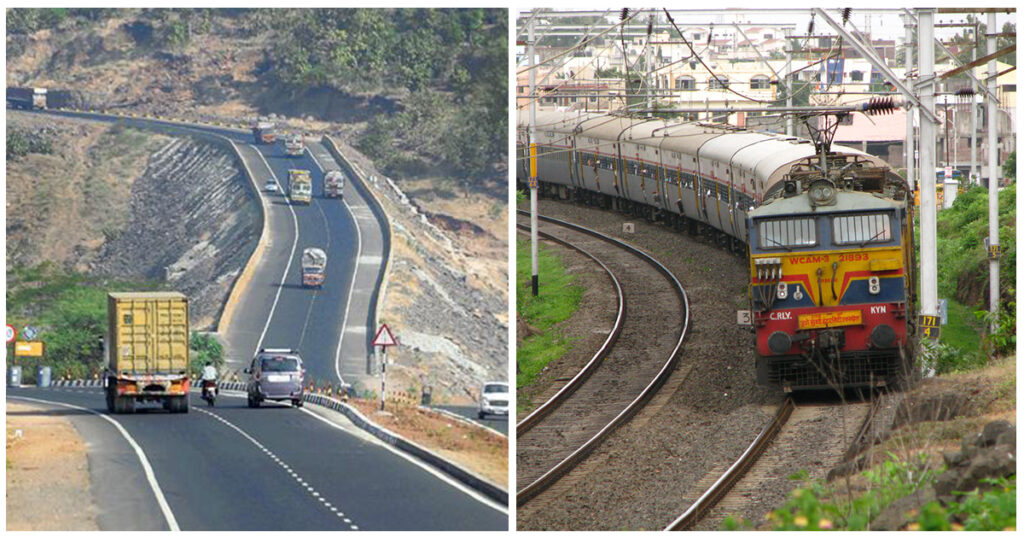
Problem Solving
The user/individual on the job needs to know how to:
SB7. identify any threats on personal health, safety, security, etc. and take
appropriate actions
SB8. identify risks at the workplace and address them
Analytical Thinking
The user/individual on the job needs to know how to:
SB9. analyse past mistakes and address them to avoid mishap in the future
Critical Thinking
The user/individual on the job needs to know how to:
SB10. check that right safety measures and procedures are in place
Verify GST invoice
Description This unit is about recognising applicability of GST and verifying invoice.
Scope This unit/task covers the following:
• Check applicability of GST
• Verify invoice
Range: Laptop, Microsoft Office office, enterprise resource planning (ERP), computer,
projector
Performance Criteria(PC) w.r.t. the Scope
Element Performance Criteria
Check applicability of
GST
To be competent, the user/ individual must be able to:
PC1. identify location of service recipient and place of supply of services
PC2. identify proper classification of the transaction (i.e. Intra-State or Inter-state)
and determine the applicable GST: Central Goods and Services Tax (CGST),
Integrated Goods and Services Tax (IGST), State Goods and Services Tax
(SGST)
PC3. identify if GST is payable under reverse charge in case the Service provider is
unregistered party
Verify invoice To be competent, the user/ individual must be able to:
PC4. obtain name, address, GST Identification Number (GSTIN), Permanent
account number (PAN) number, email id of service/ shipment provider and
recipient
PC5. obtain description of service, Service accounting code (SAC) / Harmonized
System of Nomenclature (HSN) code
PC6. receive unique identification number (UIN) for multilateral entity
PC7. check for relevant notification in case of exempt clients
PC8. calculate taxable value considering applicable rate of GST based on SAC/HSN
PC9. check for vendor invoices for all mandatory particulars and applicable GST
Knowledge and Understanding (K)
A. Organizational
Context
(Knowledge of the
company /
organization and
its processes)
The individual on the job needs to know:
KA1. reporting structure to support and expedite project acivities
KA2. company’s policy and work instructions on quality standards
KA3. company’s products and services
KA4. organisational guidelines for dealing with receipts and payments
KA5. company’s policy on mode of receipts
KA6. company’s policy on processes and methods of collection and payments
B. Technical
Knowledge
The individual on the job needs to know:
KB1. financial concepts such as calculation of interest and taxes
KB2. concept and applicability of GST
KB3. bifurcation of taxes
KB4. reverse charge mechanism
KB5. exemptions under GST
KB6. refund process
KB7. use of MS office (Excel, Word)
KB8. CGST Act, 2017 (preferable not mandatory)
Skills (S)
A. Core Skills/
Generic Skills
Reading Skills
The user/individual on the job needs to know how to read:
SA1. various accounting procedures and updates
SA2. forms and policy directives
SA3. vendor invoices
Writing Skills
The user/individual on the job needs to know how to:
SA4. maintain record of invoices verified
Oral Communication (Listening and Speaking skills)
The user/individual on the job needs to know how to:
SA5. coordinate with colleagues and seniors
B. Professional Skills Decision Making
The user/individual on the job needs to know how to:
SB1. decide on applicability of taxes rates
Plan and Organize
The user/individual on the job needs to know how to:
SB2. plan and organise information for verifying invoice
Customer Centricity
The user/individual on the job needs to know how to:
SB3. check tax indicated is correct
SB4. inform about any errors or refunds to be sought and extra taxes to be paid
Problem Solving
The user/individual on the job needs to know how to:
SB5. resolve tax related issues with accounts department and vendors
Analytical Thinking
The user/individual on the job needs to know how to:
SB6. analyse invoices for tax calculation
Critical Thinking
The user/individual on the job needs to know how to:
SB7. check for error in invoice
Transport consolidating and consignment tracking
Description This unit is about consolidating the shipment and conducting follow up
Scope This unit/task covers the following:
• Collect dispatch plan and consolidate goods
• Consignment tracking
Range: Scheduling software, Standard Operating Procedures (SOP), scheduling
documentation, Microsoft office, Enterprise resource planning (ERP) and Global
Positioning System (GPS), computer, projector, stationery, worksheets etc.
Performance Criteria(PC) w.r.t. the Scope
Element Performance Criteria
Collect the dispatch plan and consolidate goods Consignment tracking
To be competent, the user/ individual must be able to:
PC1. obtain the truck schedule and goods despatch schedule planned for the day
PC2. prepare consolidation plan for goods based on
a. nature of goods
b. volume of goods by its dimensions (width, breadth and height)
c. Full Truck Load (FTL)/ Less than Truck Load (LTL) requirements
d. destination locations
e. delivery priority
f. route of truck
g. type of truck – number of axles, load bearing capacity, physical
dimensions of carriage
PC3. prepare loading plan to make sure that the goods are arranged in the
demarcated space based on weight bearing capacity of bin/crate/pallet and
order of delivery priority
PC4. coordinate with transport coordinator and warehouse in-charge to ensure
truck consolidation plan is as per original shipment plan
PC5. coordinate with dispatch supervisor to arrange for appropriate Material
Handling Equipment (MHE) to load the goods in the vehicle as per loading
plan
PC6. post arrangement of goods at loading bay, inspect that the goods are
arranged as per loading plan
PC7. inspect the loaded goods in the vehicle for compliance to loading plan
PC8. arrange for replacement or quarantine of any damaged goods during loading
or arrangement of goods in the demarcated area and inform the supervisor
accordingly
PC9. make sure that the goods are lashed appropriately, and cushioning are
provided to avoid damage during transit
PC10. update ERP with respect to goods that have been successfully dispatched
PC11. record reasons for delay or pending dispatch
To be competent, the user/ individual must be able to:
PC12. review the position of consignments in transit and coordinate with driver or
transporter in case of delays or defaults
PC13. update tracking information for each order in ERP/ Transport Management
System (TMS) to provide real time information to client
PC14. based on the incident log of the respective vehicle, proactively plan for
preventive measures and necessary arrangements if the issue occurs during
transit
PC15. coordinate with regional office/ branches and local authorities to resolve
during exigencies during transit
PC16. record the incident and coordinate with the driver till the vehicle resumes for
delivery
PC17. update estimated delivery time of the consignment in the ERP and
communicate to client
Knowledge and Understanding (K)
A. Organizational
Context
(Knowledge of the
company /
organization and
its processes)
The individual on the job needs to know:
KA1. organizational procedures
KA2. types of documentation in organization
KA3. organization policy of data maintenance, recording and handling
KA4. company’s customers, suppliers and their requirements
KA5. organization fee and charges structure
KA6. records and log books to be maintained and the importance of the same
KA7. company’s material movement policy
KA8. relevant safety and security procedures
KA9. details of transport companies the organization works with and their
processes
KA10. procedure followed while booking trucks to pick up and transport
consignments
B. Technical
Knowledge
The individual on the job needs to know:
KB1. details required while consolidating orders
KB2. various documentation associated with transport
KB3. basic norms regarding packing of items like food items should be separate
from toiletries, etc.
KB4. dangerous goods and their handling and movement procedures
KB5. use of computer for electronic documentation of information
KB6. use of GPS and tracking software
KB7. distances to different destination and estimate travel time required
KB8. different types of truck loads
KB9. methods for consolidating orders based on type, size, destination etc.
KB10. possible common challenges and errors in consolidation
KB11. ERP system and extracting information from it
KB12. how to maintain communication and control through all phases of the cargo
transit
Reading Skills
The user/individual on the job needs to know how to read:
SA1. schedule and plan for cargo transport
SA2. consolidation charts
SA3. instructions and conditions during cargo movement
SA4. instructions on how to use the tracking systems
Writing Skills
The user/individual on the job needs to know how to:
SA5. prepare written delivery schedule and charts
SA6. maintain the record as per company’s policies
SA7. make entries into the ERP
SA8. fill out forms, inspection checklists pertaining to the customer consignments
Oral Communication (Listening and Speaking skills)
The user/individual on the job needs to know how to:
SA9. regularly communicate with all employees to ensure activities are running
smoothly
SA10. listen to the issues of the drivers
SA11. communicate with warehouse manager, supervisors, drivers, trucking
companies and head office
D. Professional Skills Decision Making
The user/individual on the job needs to know how to:
SB1. make a judgment as to how to utilize the space while consolidating
SB2. decide the estimated time required for consolidation and making schedules
SB3. make a judgment as to whether a route change is required or not
Plan and Organize
The user/individual on the job needs to know how to:
SB4. prioritize and execute tasks within the scheduled time limits
SB5. adjust resource according to volume and capacity needs during peak and nonpeak hours
SB6. maintain schedules and punctuality
SB7. flexibility to re-assess schedule in case of delays/additional orders
Customer Centricity
The user/individual on the job needs to know how to:
SB8. understand the customer requirements and ensure that they are met
SB9. prepare schedules and consolidation plans keeping in mind customer’s time
lines and any special instructions from the head office
SB10. communicate with customers and share all relevant information
Problem Solving
The user/individual on the job needs to know how to:
SB11. identify and correct errors in schedule plan
SB12. handle day to day problems like delays, staffing shortage, etc.
Analytical Thinking
The user/individual on the job needs to know how to:
SB13. analyze costs to determine optimum costing for final deliveries
SB14. assess the type of truck required and whether FTL or LTL is to be used
SB15. keep track of the progress of each truck in real time
Critical Thinking
The user/individual on the job needs to know how to:
SB16. suggest methods to streamline consolidation of orders
SB17. identify strengths and weaknesses of alternative route for transportation


